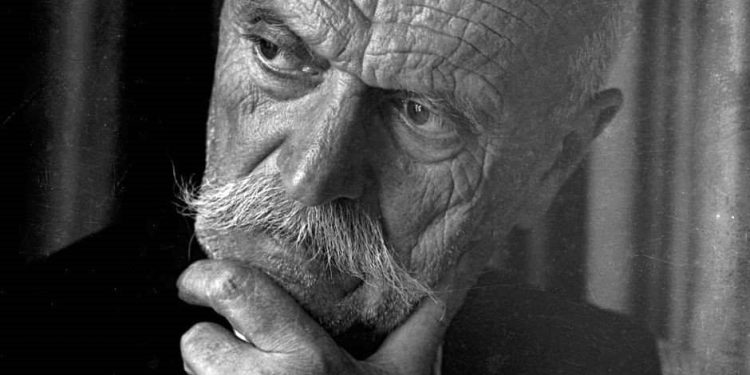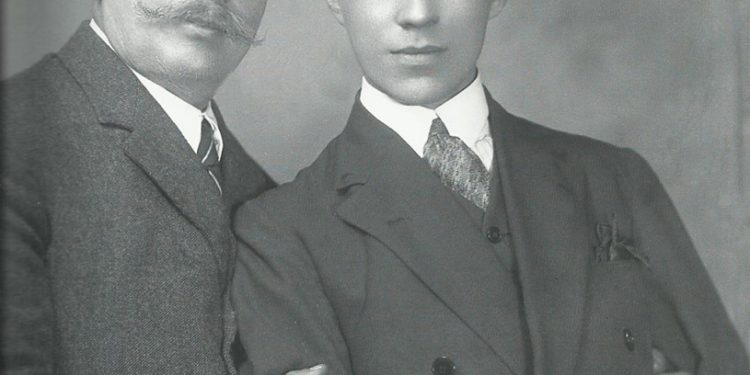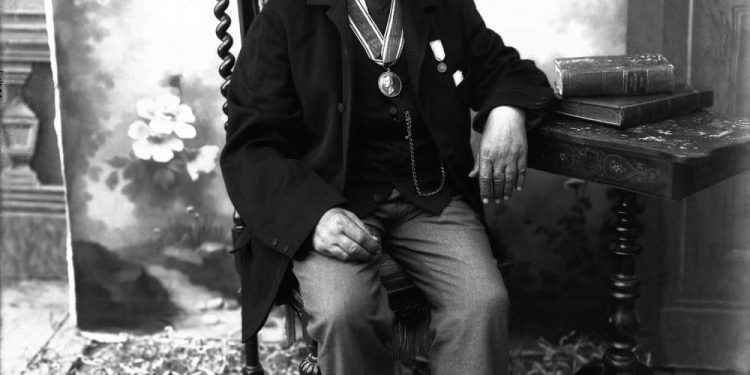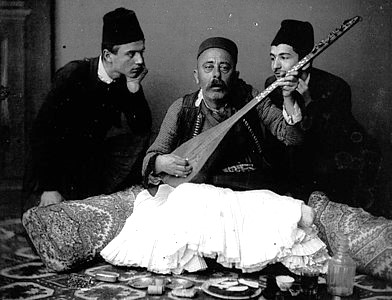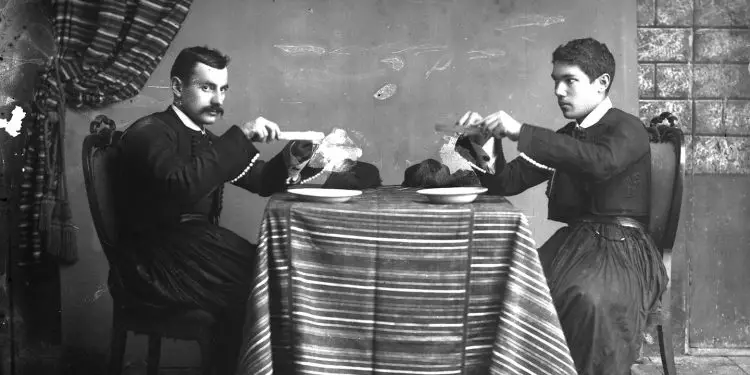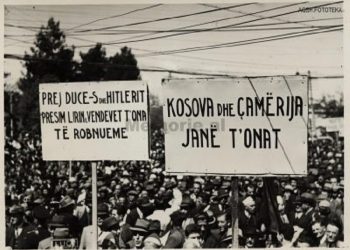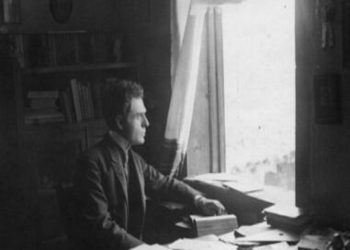From Qerim Vrioni
Memorie.al / The arrival of the Italian Pietro Marubbi (Piacenza, 1834-Shkodër, 1903) in Albania in the middle of the 19th century were probably a coincidence, but for the luck of our culture, it turned out to be quite auspicious. He was taken to his homeland, also with patriotic activity, against the Austro-Hungarian occupation. The persecution for this forced him to flee Italy and go first to Corfu and then to Vlora. The advice of the Italian consul in Vlora, to go to Shkodër “because there are Catholics there”, would not take place, if he did not also find the European cultural environment of this city there.
In his hometown, Pietro Marubbi had studied painting, sculpture, architecture and… Photography. With the latter, the Italian from Piacenza decided to move to his new residence. Thus, around 1855, he opened the first photography studio in Shkodër, named “Studio Marubbi”, the first in the country, among the first in the Balkans.
He started photographing with the process of liquid collodion, as in all of Europe, mainly known, but also unknown people of the city. Among the photographs of this period, there is also that of the well-known illegal of the province, Hamz Kazazi (1858), with which Albanian photography begins.
Three years later (1861), he creates the first photographic landscape, which presents Shkodra. Little by little, Pietro Marubbi began to absorb the mentality of the Albanians and thanks to the special hospitality of the people of Shkodran towards him.
Thus, after he also learned Albanian, the people of Shkodran Albanianized his name to Pjetër. Being a bit of a painter and sculptor, he did the wall paintings of the Orthodox Church of the city, and he was also often asked by different citizens about their children’s skills in the visual arts.
One of these was Arsen Idromeno, who, with the advice of master Marubi, sent his son, Kola, to study painting in Venice, Italy. Perhaps the well-known painter Kol Idromeno is a great gift of Pjetër Marubi to Albanian culture.
Meanwhile, the master begins to leave the studio and photograph in nature, social subjects, but also historical ones. Such photos belong to this period, such as the very well-known; “Beggars in the surroundings of Shkodra” (1875) with great expressive power, as well as; “Portrait of a woman” (1878) and “Little Gypsy”.
Of great value is the photo of Pjetër Marubi, which represents the delegates of the Vilayet of Shkodra in the League of Prizren (1878), as well as the one that reflects the Uprising of Mirdita (1876-1877).
With these photos, he begins his long collaboration with well-known European magazines, such as; “L’Illustration”, “La Guerra d’Oriente” and “The Illustrated London News”, thus becoming the first photojournalist in the history of Albanian photography.
Marubi’s photos, on the fighting movements of the Albanians for freedom, are almost identical, with those that are held to be the first world photos of the war, such as those of the Englishman Fenton and the American Brady. We also mention that he took the first photographs in Montenegro (1865).
The photographs in the studio were made by Pietro Marubi with natural lighting, coming in from a window (window in the roof), where the space for entering the light was variable. As backgrounds, inside the studio, the master, like all his European colleagues, used painted meringues; appropriate to what was to be photographed, such as still life’s, landscapes of Albanian nature, views of family environments, etc.
Also, he often placed grass, branches and tree trunks inside the studio, always with an ideological connection to the subject he would photograph. At first, Marubi used the collodion process in the preparation of the negative, while around the years 1885-1890, he replaced it with dry glass plates, produced industrially in factories, with silver bromide gelatin, which greatly facilitated and made photography more practical. . Most of his photos are printed in black and white, but others are also in sepia.
Pjeter Marubi’s photographic creativity includes many genres, such as; photo portrait, natural and urban landscape, ethnography, history, photography with social subjects, etc. and, in a way, it constitutes a “mine” for researchers of different fields of science. At the beginning of his activity, his devices were French and German products, measuring 30 cm. with 40 cm.
Lots of pictures of him they were also printed as postcards sought after by foreigners for their beauty and exoticism. Pjeter Marubi has also been honored with a gold medal (“Premiato con Medaglia d’Oro”) for photography, and we learn this from a postcard, where, unfortunately, neither the date nor the place of the competition is specified.
Around 1885, Pjetër Marubi took fifteen-year-old Mikel Kodheli as a “shop boy”, who, in addition to daily chores, began to learn the secrets of the photography process. The old master also liked this, who began to help him without sparing the boy, who showed signs that he could become a good photographer. And he wasn’t wrong. Not yet twenty years old, Keli (Mikeli) knew almost all the ins and outs of the craft, even with artistic requirements.
In the last years of his life, Pjetër Marubi felt a certain peace of mind. He had not only “planted” photography in Albania, but had also created a worthy successor to his work. Well, that was not enough for him.
Thus, Kel Kodheli, then with the surname Marubi, after the extinction of Marubi-plak, continued the photographic activity of “Studio Marubi-Shkodër” both from a technical and artistic point of view, started by Pjetër Marubi, who anyway has monumentalized his name, as; “Father of Albanian photography”.
Pietro Marubbi, the first of the Albanian Lumiere
Pietro was born in Piacenza, Italy, in 1834. Talented in many fields, he cultivated his talents in his native country. In addition to being an architect, painter and sculptor, he excelled especially in the art of photography. He is the first photographer in Albania and the Balkans.
Having experienced Italian nationalism and the Macinian and Garibaldian movements, he was involved in the murder of the Count of Piacenza (at that time the city was governed by the Austrians), for whom the Garibaldian movements were an eyesore. These political circumstances forced him to move to the Balkans.
From Corfu, Vlora, he went to Shkodër, because “there are Catholics” there (according to the advice of the Italian consul in Vlora). Since then, the city, along with Ioannina, was the biggest centers of culture in the Albanian territory. In 1856 he arrived in Shkodër, where he found refuge, escaping his pursuers. Thanks to the influences of the circumstances, he started working as a photographer.
In the same year, he opened the first photographic atelier (French, artist’s workroom) “Studio Marubi”. A large room with an area of 35 m², half of wall, half of glass. The right side of the walls and the roof were all made of glass (green), in order for the light to enter and penetrate naturally.
The first black and white clichés were of 21×27, 26×31 and 30×40 formats. Then they come and change, and photography manages to make clichés, almost of all formats of the time. Also, he often placed grass, branches and tree trunks inside the studio; always with an ideological connection to the subject he was going to photograph.
At first, Marubi used the collodion process in preparing the negative. As backgrounds, inside the studio, the master, like all his European colleagues, used painted meringues appropriate to what was to be photographed, such as still life’s, landscapes of Albanian nature, views of family environments, etc. Let’s not forget that we are in a time when Europe, only a few years ago, had recognized the wonderful art of photography (1839).
“The city was waiting for a sorcerer, who set fire to all the dust and dirt, and held a piece of thick paper in his hand, where exactly you were” – wrote the chronicles in the newspapers of the time.
In the archive of the Historical Museum of the city of Shkodra (Marubi Fund) there is a model – type of invoice issued by the “Marubi” studio in 1929, on the head of which, in Albanian and Italian, it is written: House founded in 1856 (Casa fondata in 1856). This is also confirmed by the descendants of the Marubi family.
It cannot be said for sure which was the first picture. As the negative was produced in the studio by coating the glass with silver nitrate solution (liquid collodion), after printing on paper, for reasons of economy, the negative was erased and a new layer of solution was placed on the glass, creating a new negative, for the next picture. This method continued until the 1890s, when ready-made negatives (dry collodion) were imported.
His studio specialized not only in private photographic services (portraits of persons and families), but in the 70s of the XIX century, Pietro served as a reporter for the Italian magazine “Illustrazione Italiana”, in the province of Shkodra. The Albanian city in the north of the country, near the high mountains, stood out for its beautiful, lyrical, but also epic civic songs.
In such an environment, Pietro Marubi, after several years of staying in Shkodër, calls himself “Peter Marubi, Shkodran among Shkodrans”. Pjetri, having a lot of work, takes the first helper, a boy as a “shop boy”, the son of the gardener of his house, Mati Kodheli.
Born in 1862, Matia, amazed by the master’s work, asked him to work with him. He sends him for specialization in Trieste. After his specialization, he returns to Shkodër to work with Pjetër Marubi, where he forms a close friendship with Kolë Idromeno.
Unfortunately, life for Mati Kodheli is very spare. Only 21 years old, Mati Kodheli closed his eyes in 1881, decently leaving his name, in what will be called; “Dynasty of the Marubi”, the favorite photographers, from all social classes. /Memorie.al




